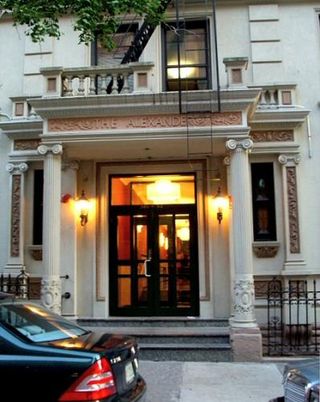James writes:
The disastrous legislation banning the SRO hotels on the Upper West Side, which I first wrote about in The Daily News, continues to fall out around the politicians who planned it, with still no satisfactory resolution for local residents.
When the hotels were banned through legislation in Albany, its advocates claimed the move would protect tenants rights by preventing the spread of so-called "illegal" businesses. Instead, the legislation cut off the only means of free-market profitability for the buildings' owners--whether unintentionally or by design remains an open question.
Rather than open up more space for tenants, the legislation has sent SRO landlords into the arms of city agencies looking to utilize the buildings for their own programs, and willing to offer sweetheart deals with taxpayer money to do it. In the case of one building on 94th Street, this means that a pleasant hotel that was welcomed by the community will be converted into a 200-bed homeless shelter with a 9-year contract.
The Upper West Side is a liberal neighborhood, but it already bears an unfair share of such facilities, against the spirit of "Fair Share" in the city charter. As one resident put it, the neighborhood is rightly facing a case of "compassion fatigue."
The News editorial, distributed through the email lists of neighborhood organizations, in particular Neighborhood in the Nineties managed by Aaron Biller, mobilized a swift response. Hundreds of concerned residents showed up at the Community Board 7 meeting on January 3 to voice their complaints. Their protests were covered by CBS news and other agencies.
Following this event, The New York Times picked up on the story on January 14. As I made clear in my editorial, despite the rhetoric, the SRO legislation does nothing to protect tenants. In fact, it has caused a crisis for the tenants who still live in the permanent apartments within the converted hotels. In the case of 94th Street, the tenants welcomed the hotel in their buildings. The hotels were certainly a welcome improvement over the dilapidated state of the buildings decades ago (click here to see a fascinating photo essay of SRO living four decades ago). Now, ironically, they will most likely lose their homes as the homeless shelter moves in. The Times story profiles some of these tenants.
Within hours of the appearance of the Times story, Councilwoman Gale Brewer called a press conference in front of the 94th Street hotel. Her event took place Sunday at noon. She brought in Congressman Charlie Rangel, Manhattan Borough President Scott Stringer, and other politicians to join her in denouncing the conversion of the building into a shelter.
As a member of the "Illegal Hotels Working Group," Brewer was one of the politicians championing the hotel ban in Albany. She has built her political career around advancing "tenants rights." Yet legislation she supported has now become a disaster for tenants in the building and all residents in the neighborhood.
And a disaster for her political future. Brewer created the problem that she is now attempting to claim to fix. Her calling in Rangel and others at short notice is an indication of how much political damage she may foresee for herself if the homeless shelter goes through against the wishes of a mobilized constituency, due either to her own ineptitude or to willful collusion. (One also wonders if Rangel, who was censored by congress for taking up multiple rent-controlled apartments for his own use, is the best advocate for tenant rights).
Above is a video I took of the Rangel/Stringer/Brewer press rally.
Brewer wants to get in front of this story for her own political future, but her ability to do so will depend on two things: whether she will be able to stop the conversion of the building into a shelter, as well as the conversion of other nearby SRO hotels into supportive housing. Second, the question remains of how much she knew about the shelter and when. This report quotes a source at the Department of Homeless Services saying that the agency had been in many talks with Brewer and the Community Board about the shelter. This implies that either little was initially done to oppose it, or the deal was accepted by Brewer before she faced strong community opposition. This open question calls for further investigation.
The case of the SROs conversion, which remains unresolved despite community uproar, is just one example of how bad government policy has retarded positive growth on the Upper West Side. The questions are why and what can be done about it. These are the systemic issues I am currently investigating for a longer essay in City Journal magazine. Stay tuned...

